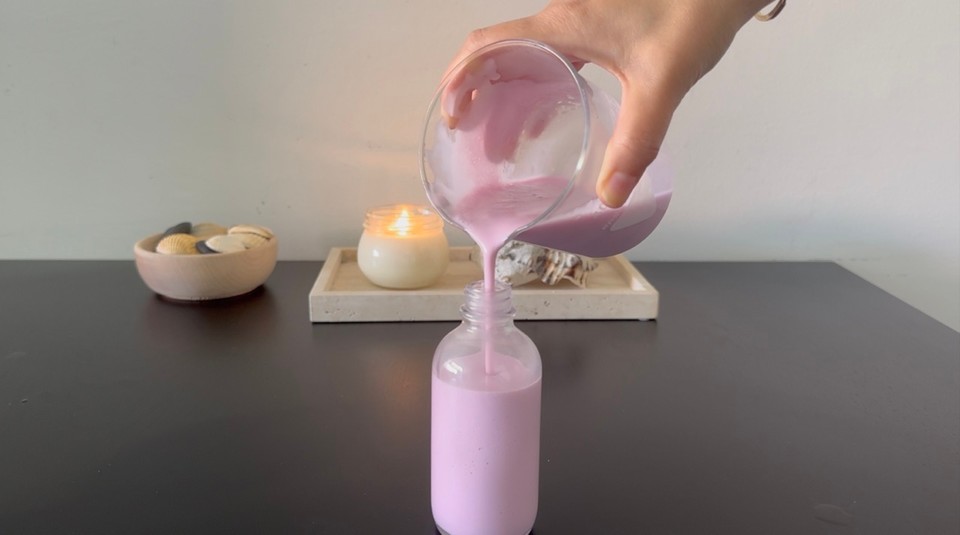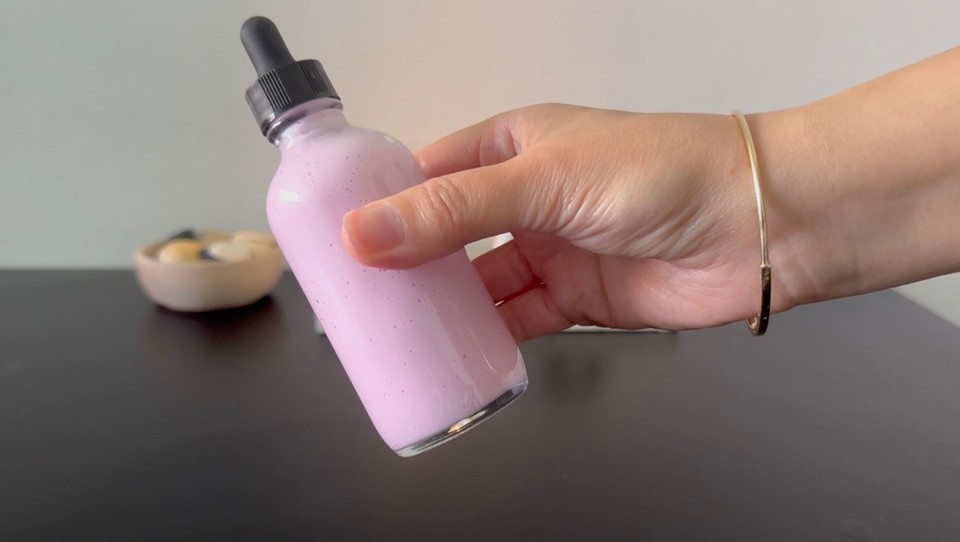Hair Serum
| Phase | Ingredient | Percent (%) | Weight (g) |
|---|---|---|---|
| Phase A | Distilled water | 76.0 | 76 |
| Xanthan gum | 0.3 | 0.3 | |
| Glycerin | 3.0 | 3 | |
| Phase B | Coco caprylate | 6.0 | 6 |
| Squalane | 2.0 | 2 | |
| Imwitor 375 (INCI - Glyceryl Citrate/Lactate/Linoleate/Oleate) | 3.0 | 3 | |
| Phase C | Panthenol | 1.0 | 1 |
| Amaranthus Caudatus Seed Extract | 2.0 | 2 | |
| Betaine | 2.0 | 2 | |
| Propanediol (INCI - Trimethylene glycol) | 2.0 | 2 | |
| Lactic acid 80% solution | 0.9 | 0.9 | |
| Cosgard (INCI - Benzyl Alcohol, Dehydroacetic Acid, Aqua) | 0.8 | 0.8 | |
| Fragrance oil (cherry) | 1.0 | 1 |
You can help support my website and channel through the “buy me a coffee” page.
Here is the link: https://www.buymeacoffee.com/diycosmetica
Your support helps me keep sharing here more information and more formulas.
Hair serums are designed to coat the surface of your hair. They can significantly reduce frizz by smoothing down the hair cuticles. Using a hair serum can instantly boost your hair's shine, as it coats each strand to reflect light, giving it a healthier and more lustrous look. By creating a protective layer around each hair shaft, serums effectively seal in moisture, offering a significant benefit for those with dry or damaged hair by maintaining hydration for extended periods. When applied to wet or dry hair, a serum facilitates easier detangling, providing a smooth surface that allows for gentle combing or brushing, thus minimizing the risk of breakage during styling. Although serums are not a permanent solution for hair damage, they offer a temporary fix by sealing split ends and enhancing the hair's smoothness.
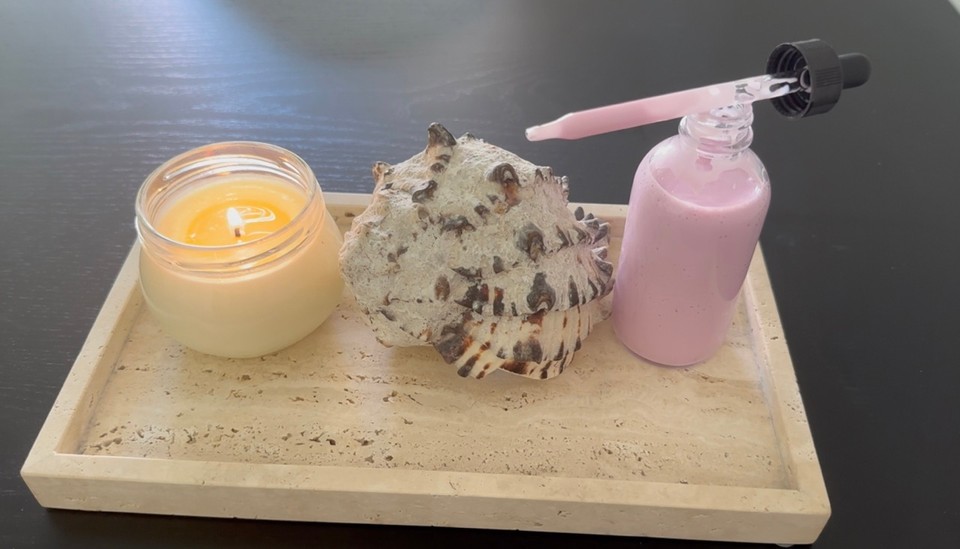
If you want to make a deep conditioning hair mask check out the Shea Butter Deep Conditioning Hair Mask. For conditioning products, check the Moisturizing Shampoo For Dry Hair and the Moisturizing Conditioner For Dry Hair. And for solid hair care products, try the Balancing Gentle Solid Shampoo and Solid Silky Conditioner Bar.
In this formula, I created a light hair serum that you can use on the ends of the hair without weighing it down. A lightweight serum ensures that the hair remains bouncy and voluminous. Heavier formulations, especially fine or thin hair types, might weigh the hair down. A non-greasy formula adds a healthy shine to the hair, giving it a lively and nourished look instead of seeming oily or unwashed. A lightweight serum is absorbed quickly by both hair and scalp, ensuring that its active ingredients are efficiently utilized to provide benefits without coating the hair heavily.
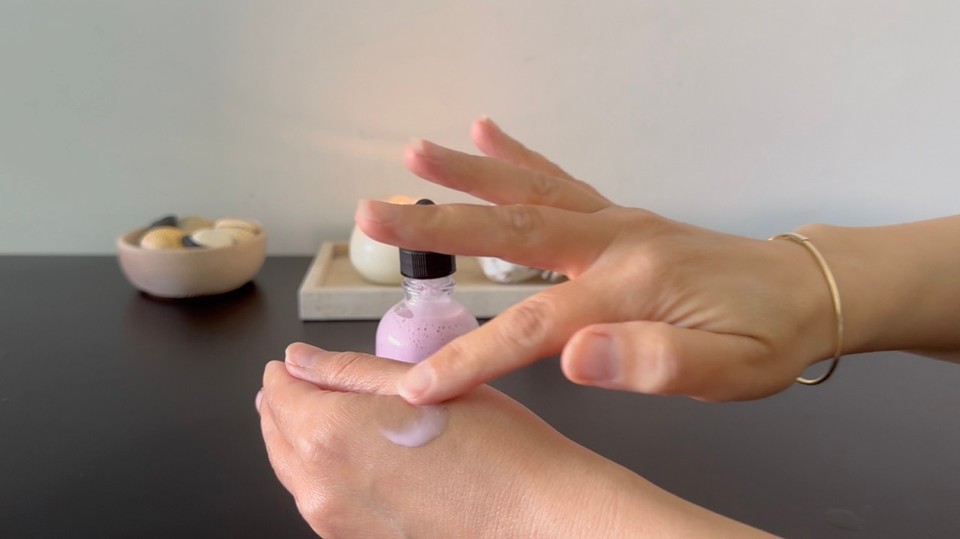
In phase A, I combined xanthan gum with glycerin to create a slurry and added water. I added the gum to have a more stable emulsion and some volume to the final product; I don't want my final product to be too liquidy.
Then, I chose very light emollients for my oil phase, phase B, that will not give a greasy residue when the serum is applied to the hair.
I chose coco caprylate, a light, non-greasy emollient derived from coconut oil. Coco Caprylate is a moisturizing agent that conditions the hair, enhancing softness and smoothness while effectively minimizing frizz for better manageability. Its lightweight nature ensures it doesn't weigh hair down like some oils can. This ingredient also adds a natural gloss to the hair, reflecting light in a way that boosts hair's healthiness and luster without an oily look. It coats each hair strand to enhance hair's texture, making it silkier and easing detangling, facilitating smoother combing and brushing, which in turn helps minimize styling breakage. A standout feature of Coco Caprylate is its non-greasy formulation, offering the hydrating advantages of coconut oil in a lighter form, ideal for all hair types, especially those with fine or oily textures. Its rapid absorption into the hair ensures essential hydration and conditioning are delivered directly to the hair shaft without leaving any residue, maintaining the hair's lightness. Additionally, Coco Caprylate creates a protective shield over the hair, securing moisture within and safeguarding against external elements like pollution, UV exposure, and humidity. You can use fractionated coconut oil or Isoamyl laurate to replace the coco caprylate.
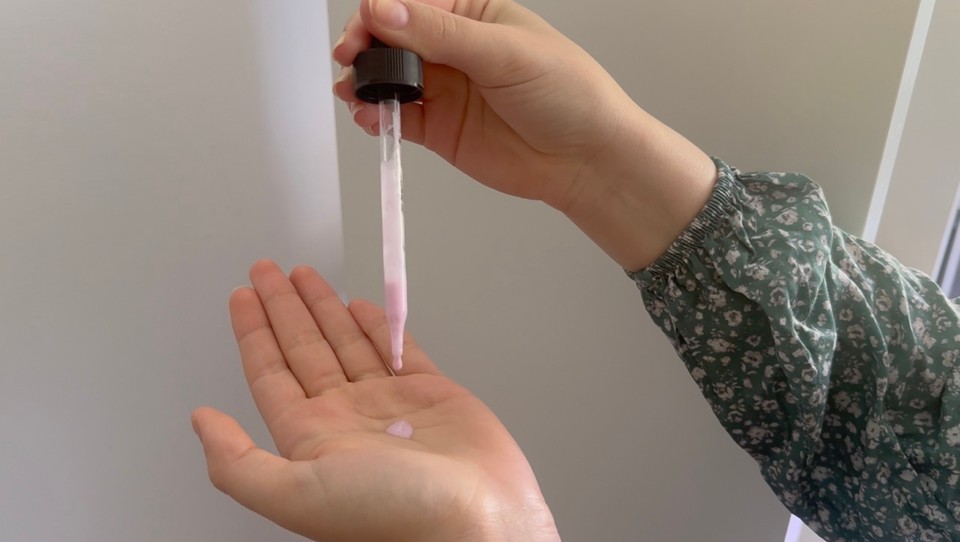
I also used Squalane in the oil phase. Squalane is extracted from plant sources like olives or produced synthetically to mimic the naturally occurring Squalane in human sebum. Squalane imparts a subtle, non-greasy luster to hair, enhancing its health and vibrancy without the heaviness associated with other oils. Its resilience against high temperatures makes it valuable in hair serums designed for heat protection. Squalane effectively minimizes frizz and keeps flyaways in check by smoothing the hair cuticle. It strengthens the hair by improving its elasticity, thus reducing the likelihood of breakage and split ends. Ideal for every hair type, including those that are color-treated or chemically altered, Squalane's gentle, lightweight nature ensures it doesn't block scalp pores, offering a perfect solution for individuals with sensitive scalps or specific skin conditions. You can use argan or jojoba oil instead.
I used Imwitor® 375 (INCI: Glyceryl Citrate/Lactate/Linoleate/Oleate) as an emulsifier. This emulsifier is derived from natural sources, such as vegetable oils and citric acid. This emulsifier creates a very light, non-greasy emulsion that can be absorbed rapidly and has a smooth texture in the final product. Its appearance is very similar to that of honey. You can use this emulsifier in hot or cold methods, but it's easier to combine the phases if you heat them. You can replace this emulsifier with: sucrose stearate, but you'll have to add it to the water phase instead of the oil phase. I used sucrose stearate as a light and non-greasy emulsifier in the Ultra Facial Cream With Squalane if you want to check how to use it.
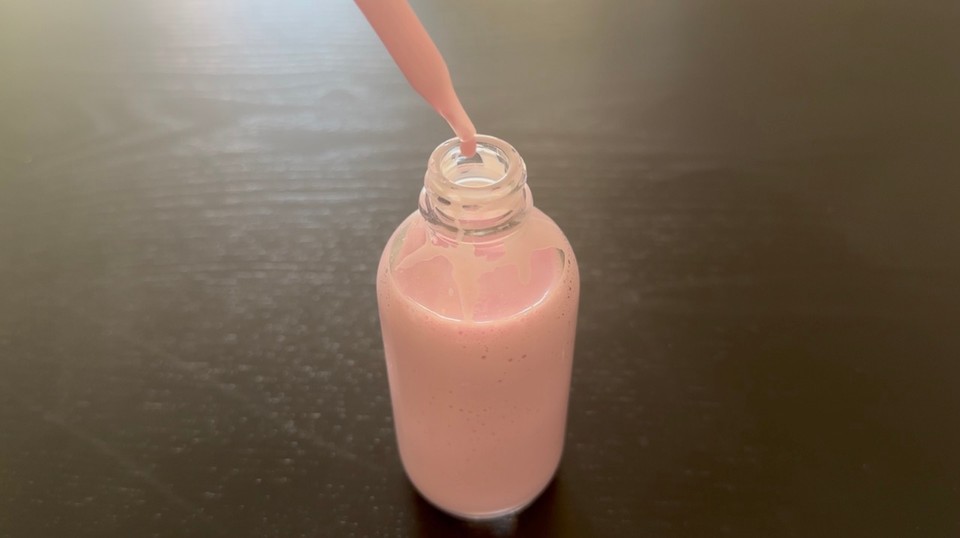
In phase C, I used betaine powder. Betaine is a powerful humectant, capable of drawing in and holding onto moisture. Its inclusion in hair serums markedly boosts hair's moisture levels, resulting in hair that is softer and more flexible, thereby reducing the likelihood of breakage and tangling. You can use aloe vera liquid or sorbitol to replace it.
Another active ingredient in this hair serum is panthenol, known as Provitamin B5. Panthenol is a strong moisture holder that keeps hair hydrated. It goes deep into the hair, making it stronger and less likely to get damaged or split. Also, by making the hair more flexible and smooth, panthenol helps to untangle it easily, which means less breakage when you comb or style your hair. You can use silk protein or wheat protein instead.
I also used Amaranthus Caudatus Seed Extract. If you have tried the Eyelashes And Eyebrows Serum, you will be familiar with this ingredient. Amaranthus Caudatus Seed Extract comes from the seeds of the Amaranth plant, Amaranthus caudatus, which is known for its highly nutritious seeds rich in proteins, minerals, and vitamins. The extract is known for its exceptional moisturizing qualities, helping to keep hair hydrated and preventing dryness. It is rich in amino acids, particularly lysine, and can strengthen and improve the hair shaft. It is also high in antioxidants, which help protect the hair and scalp from environmental stressors, preventing damage and promoting overall scalp health. You can swap it with Quinoa extract, Pea protein, Keratin, Silk amino acids or Rice protein.
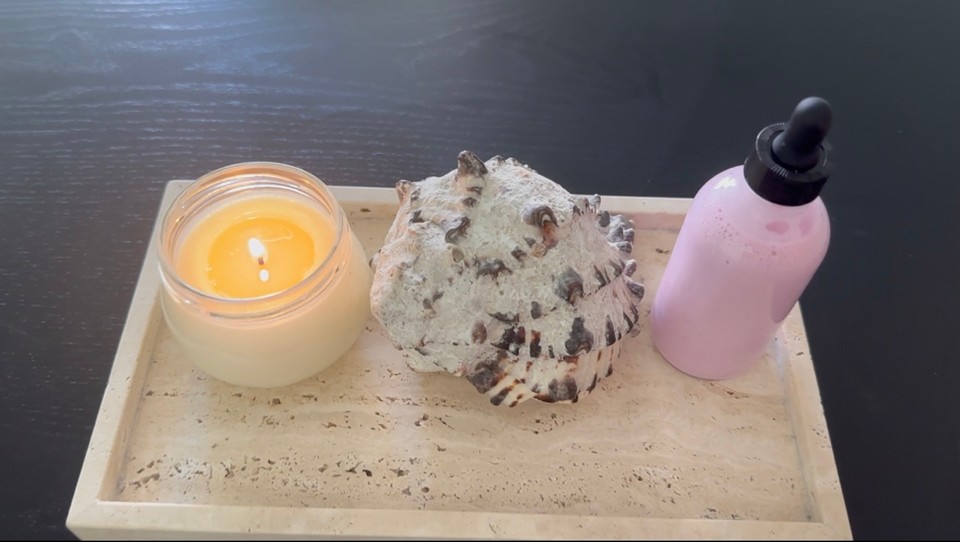
For a little extra hydration, I added Propendiol. Propanediol is an efficient moisturizer and humectant, attracting moisture to the hair and scalp. It enhances the texture of hair serums, facilitating smooth application and leaving behind a non-sticky, sleek finish without adding heaviness to the hair or any residual buildup. You can replace it with Pentylene Glycol or aloe vera liquid.
I also added lactic acid in phase C. Lactic acid is a humectant; it can smooth the hair's surface, leading to softer, more manageable hair with reduced frizz and tangling. Lactic acid is also a pH adjuster. The final product pH should be around 5.
The last two ingredients I added in phase C are the preservative and the fragrance oil. I used Cosgard for my preservative. If you use different preservatives, check the usage rate in the datasheet from your supplier. If you need to use more than 0.8%, let's say 1%, Reduce 0.2% from the distilled water to adjust the formula. If you need to use 0.5% instead of the 0.8% in the formula, add 0.3% to the distilled water.
When you choose a fragrance oil for this product, use a skin-safe fragrance oil. You can also use lavender essential oil instead of fragrance oil.
You can store the hair serum in a dropper bottle similar to the one I used for the Niacinamide Face Serum or in a press pump bottle.
To use the serum, dispense a small amount of hair serum into the palm of your hand. A little goes a long way, so start with a pea-sized amount and adjust as needed. Rub the serum between your palms to warm it up. Apply the serum to the ends of your hair; using your fingertips, gently massage the serum into the ends of your hair.
Use the calculator to adjust the amount of hair serum you wish to make.
Method:
- In a heat-resistance beaker, add the gum and the glycerin and mix to create a slurry. Add the distilled water and mix to combine. Cover the beaker with aluminum foil to minimize evaporation. Set aside.
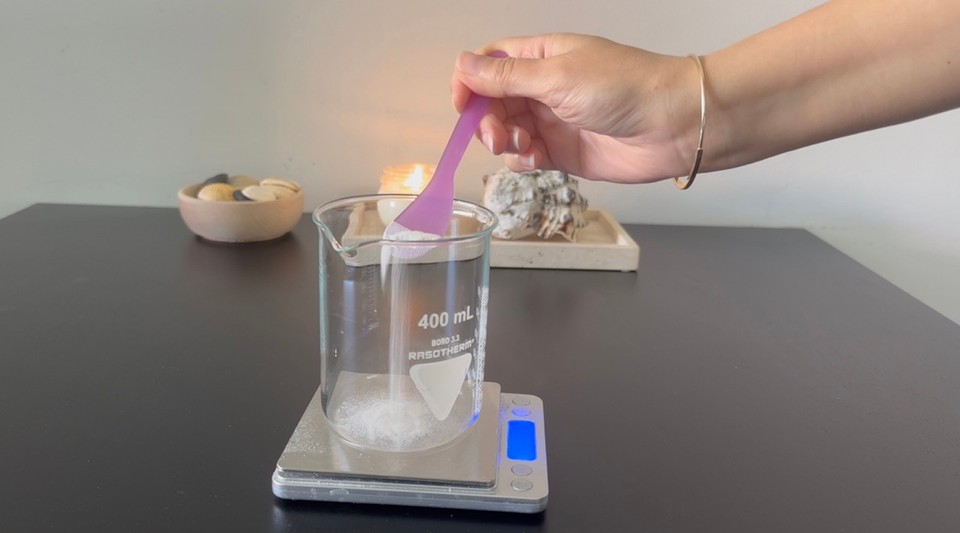
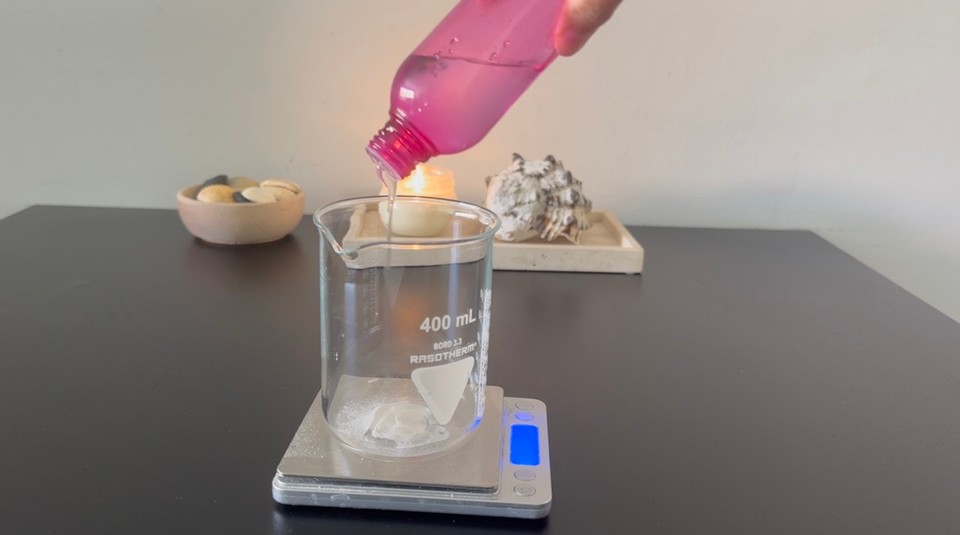
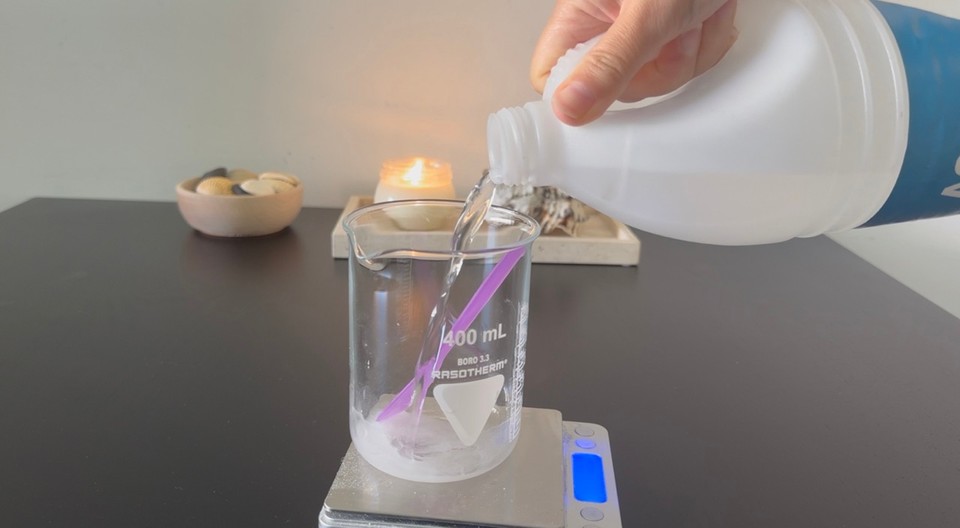

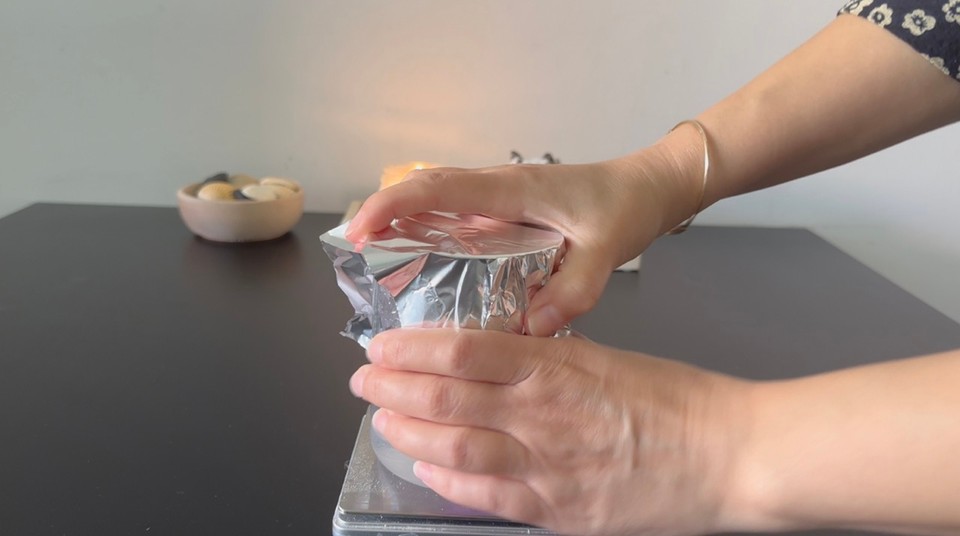
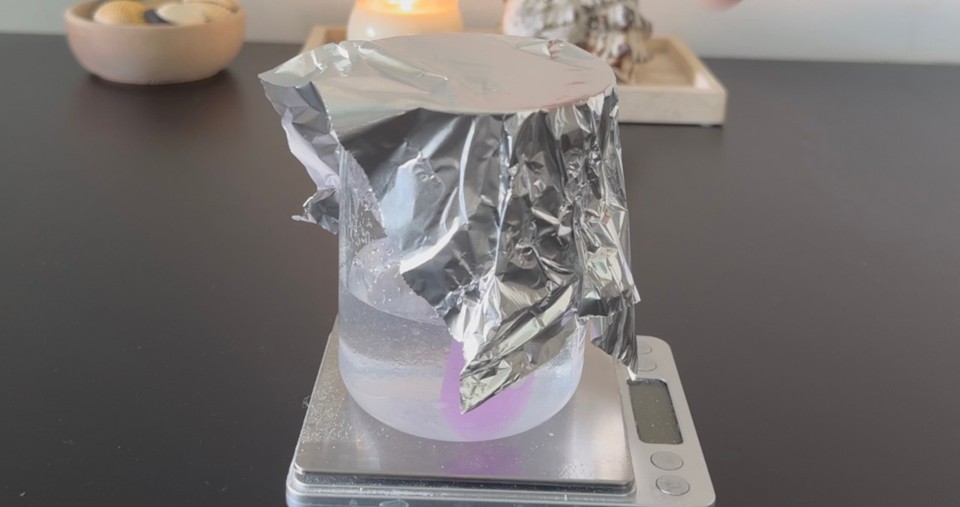
- In another heat-resistance beaker, add phase B ingredients.
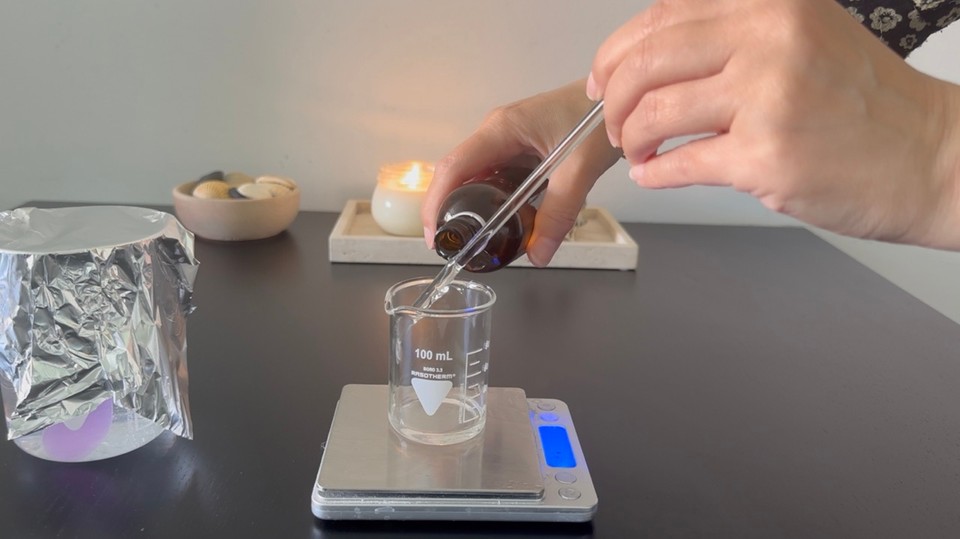
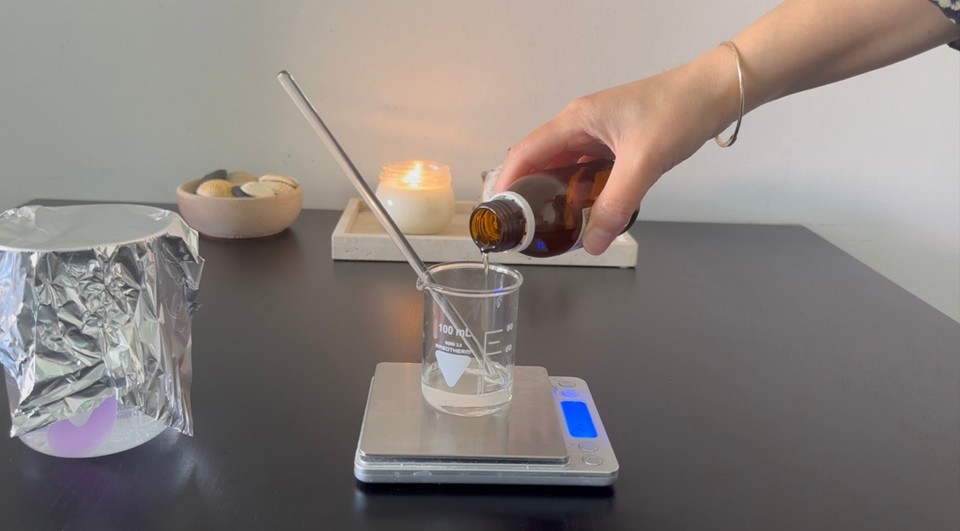

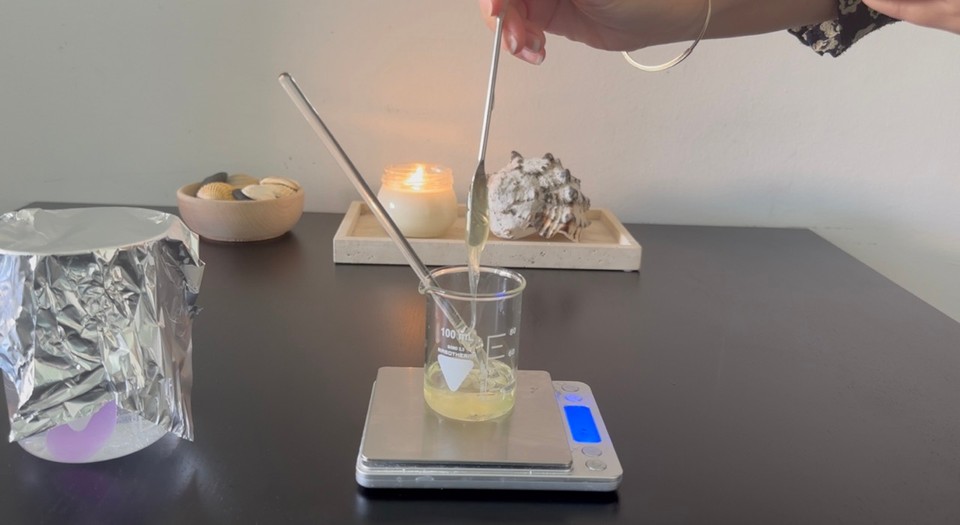
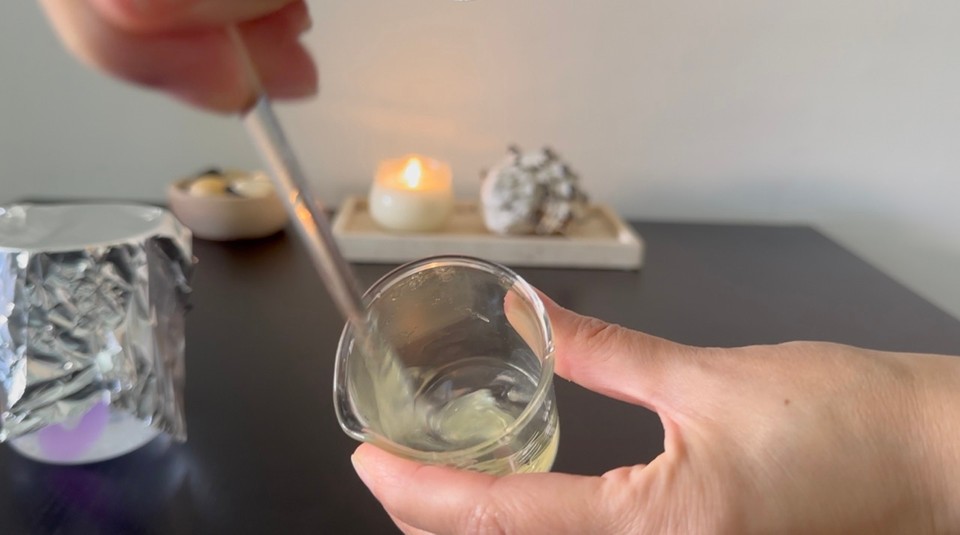
- Place phases A and B into a double boiler on low-medium heat for 20 minutes.
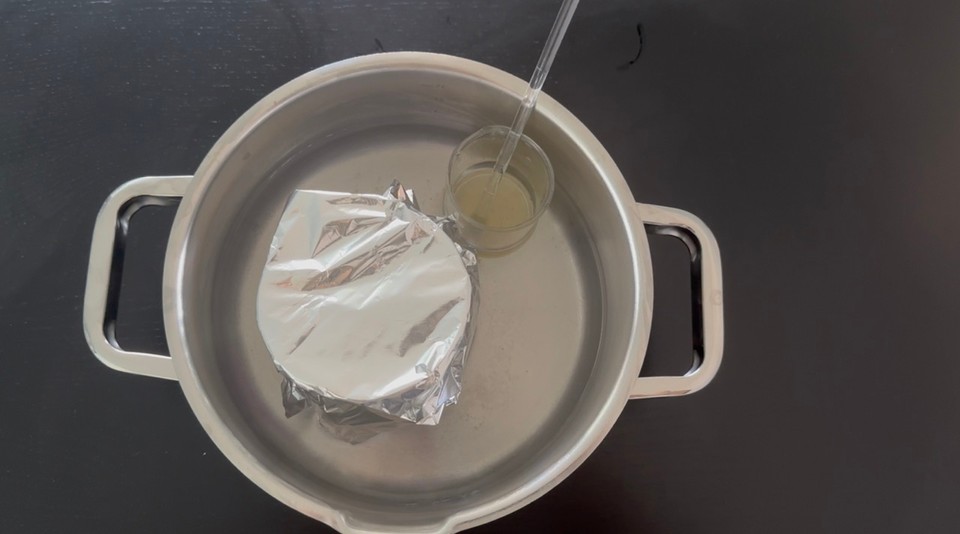
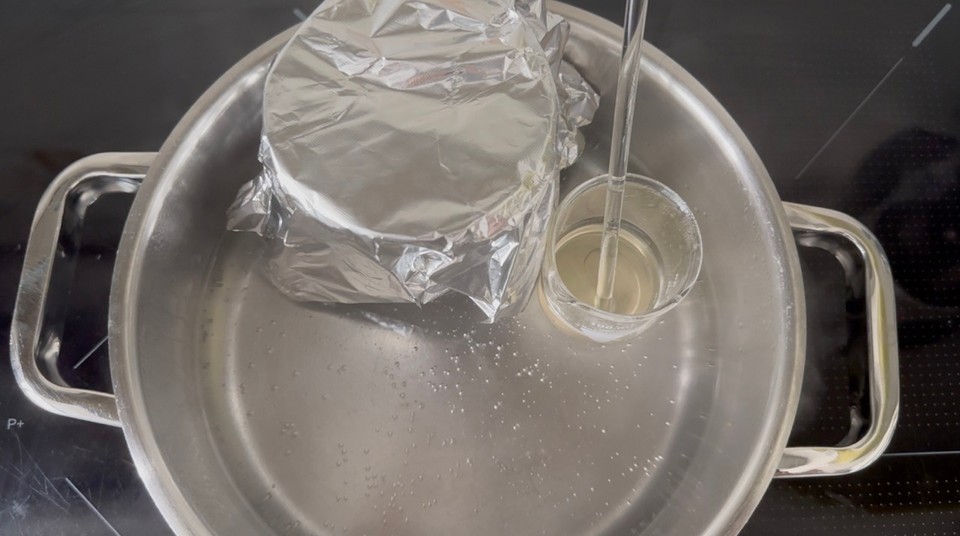
- While phases A and B are heating, prepare phase C. Add phase C ingredients to another container and mix to combine.

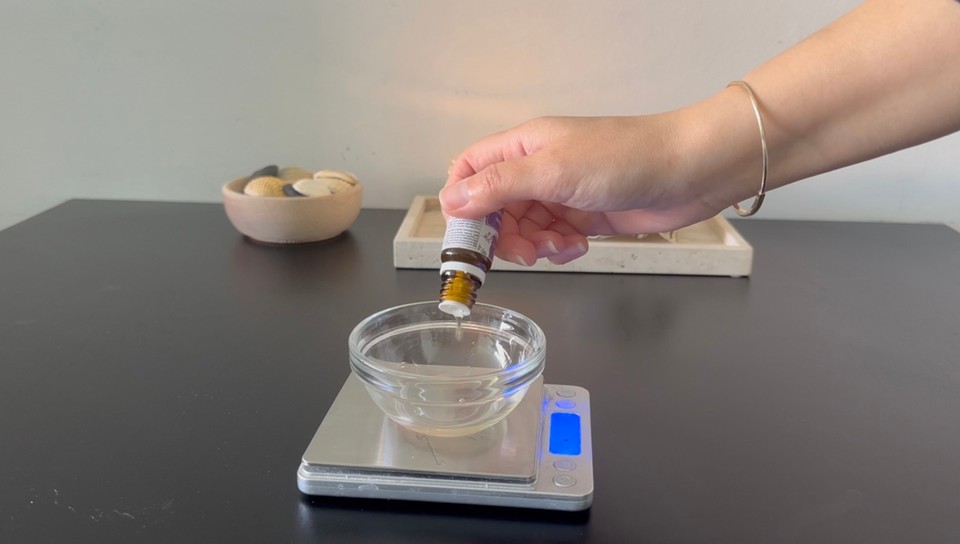


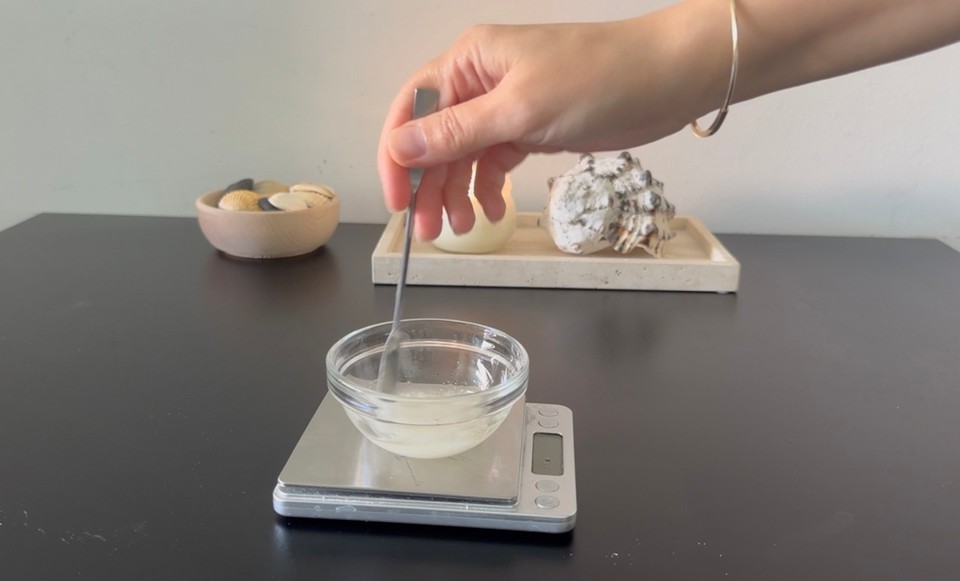
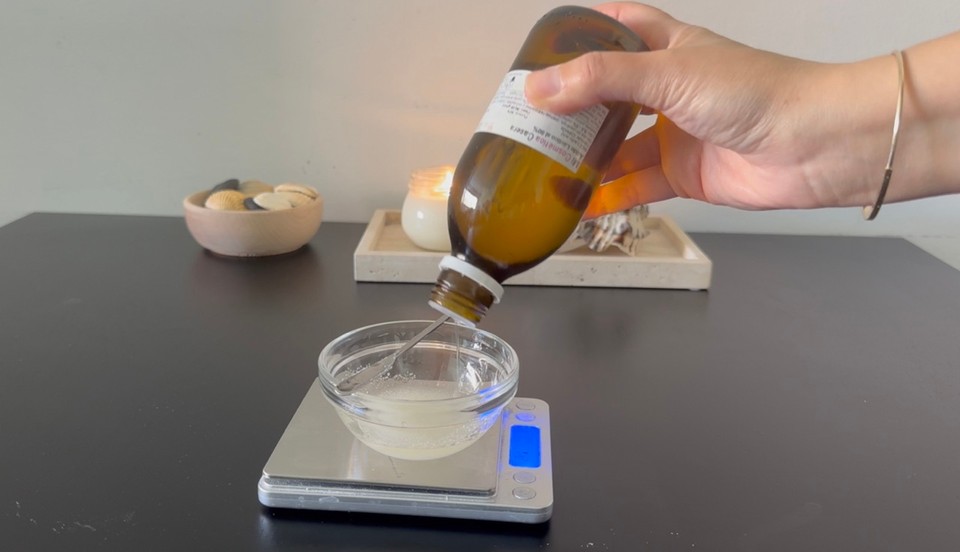

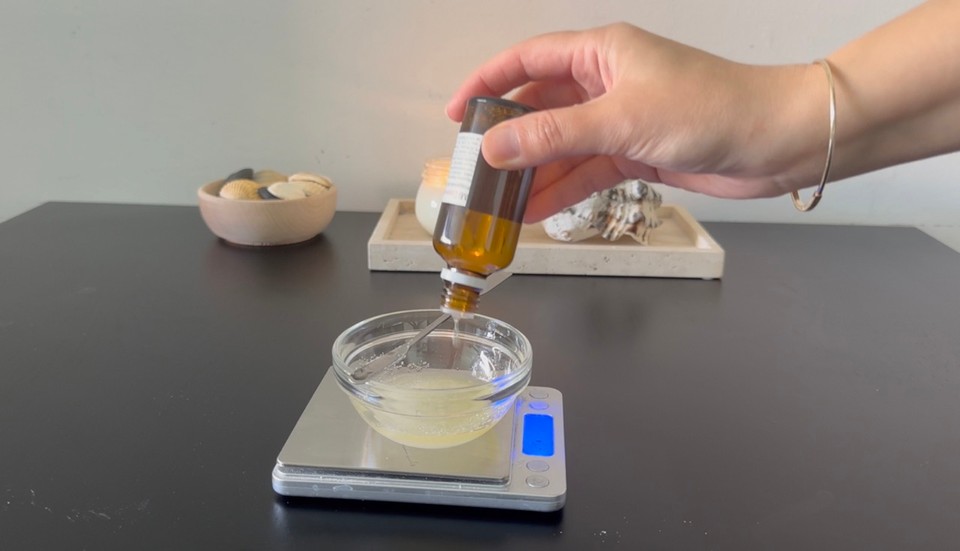

- Remove phases A and B from the heat and combine them with a high-speed blender.

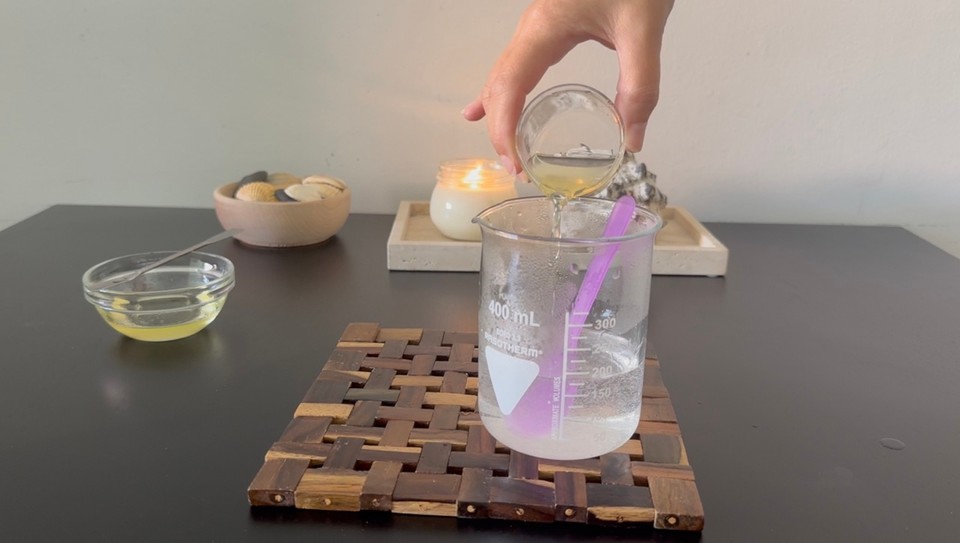
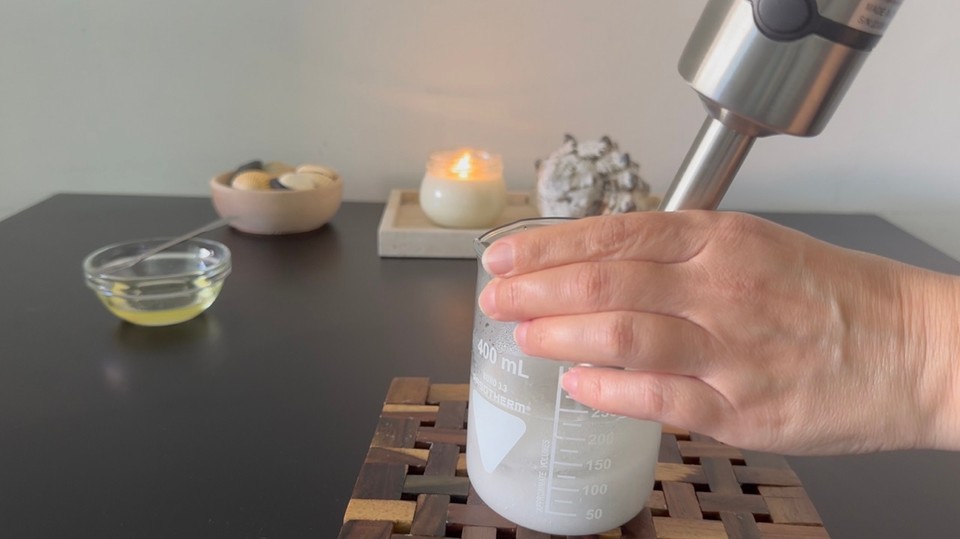
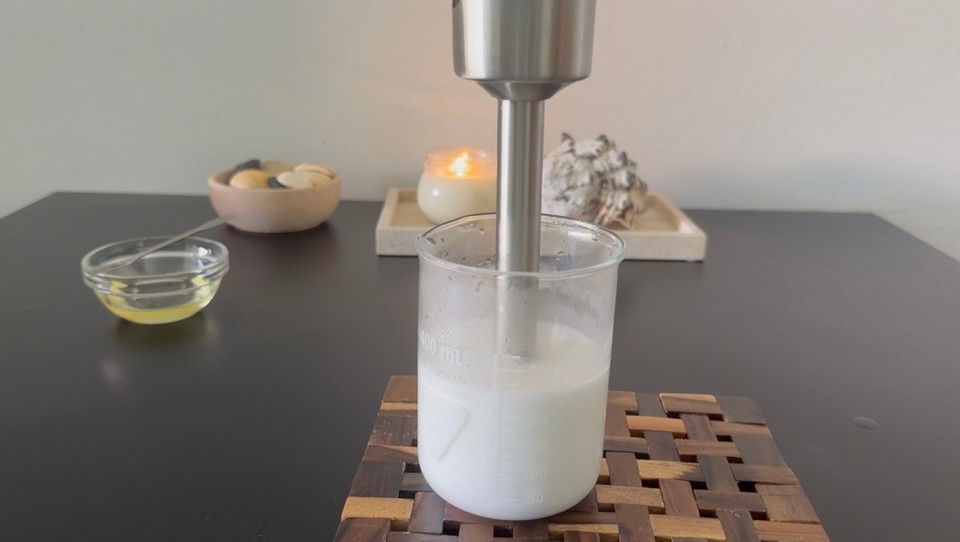
- If you wish, add color to the mixture and mix. I used a liquid cosmetic dye in the color pink.
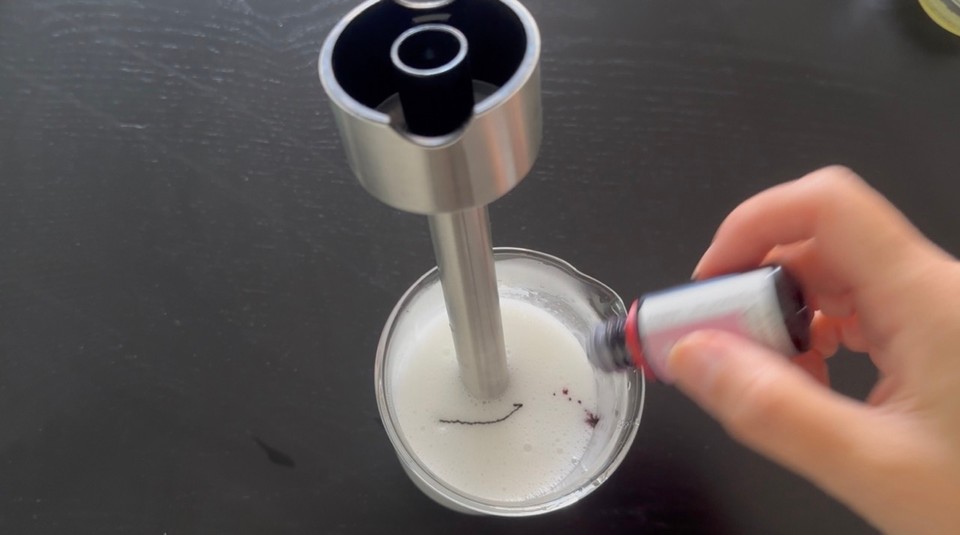
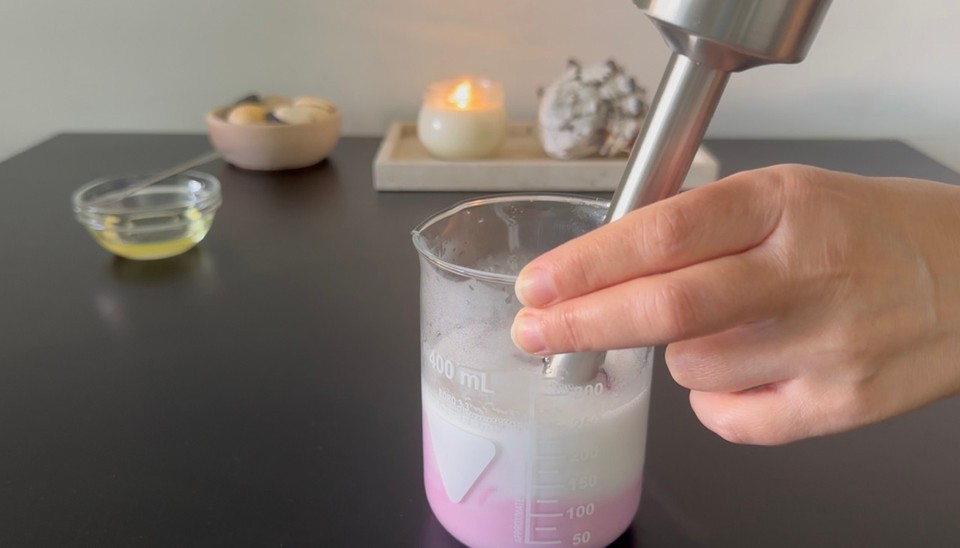

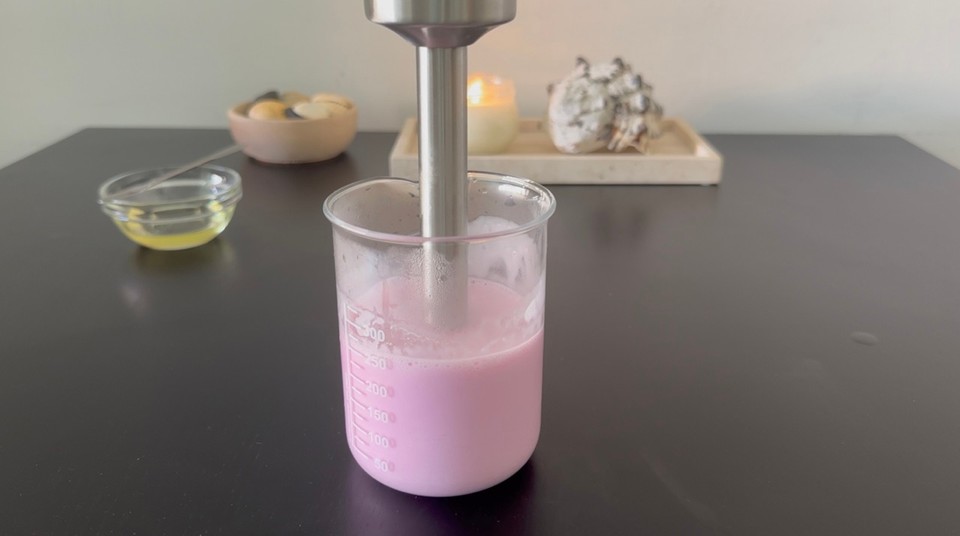
- Add phase C when the emulsion has cooled to less than 40°C, and mix to combine.
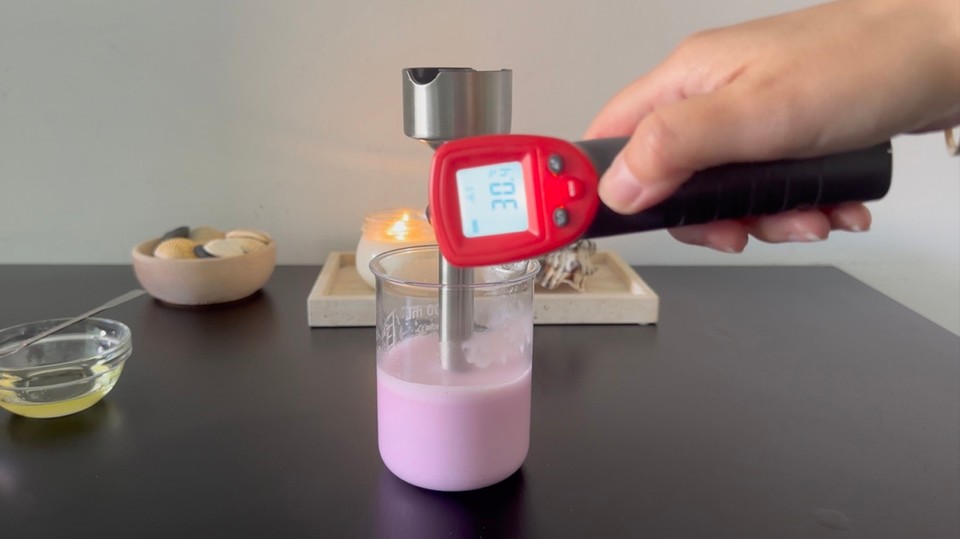

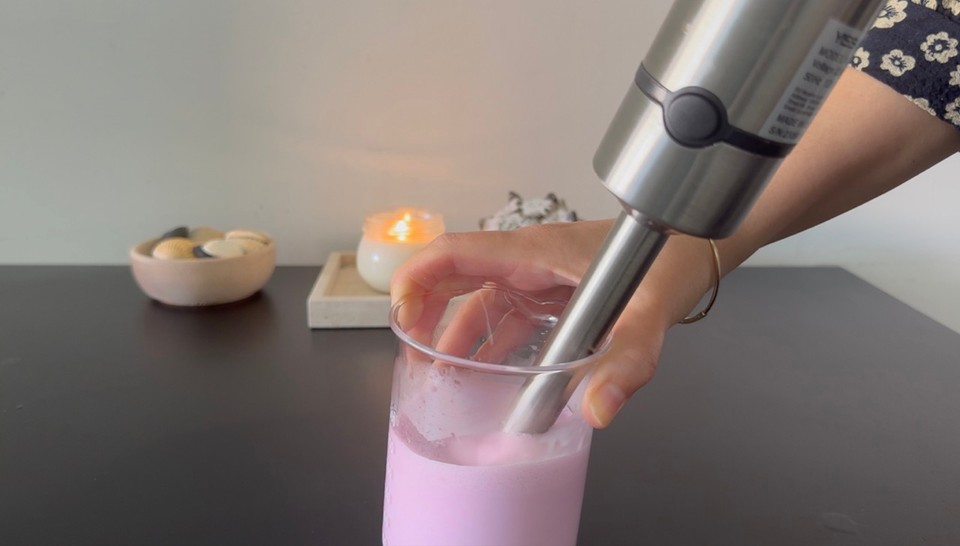
- Check the pH of the hair serum and adjust if necessary by adding a few drops of lactic acid solution. More about pH adjustments here. Final pH should be 4.5-5.5.
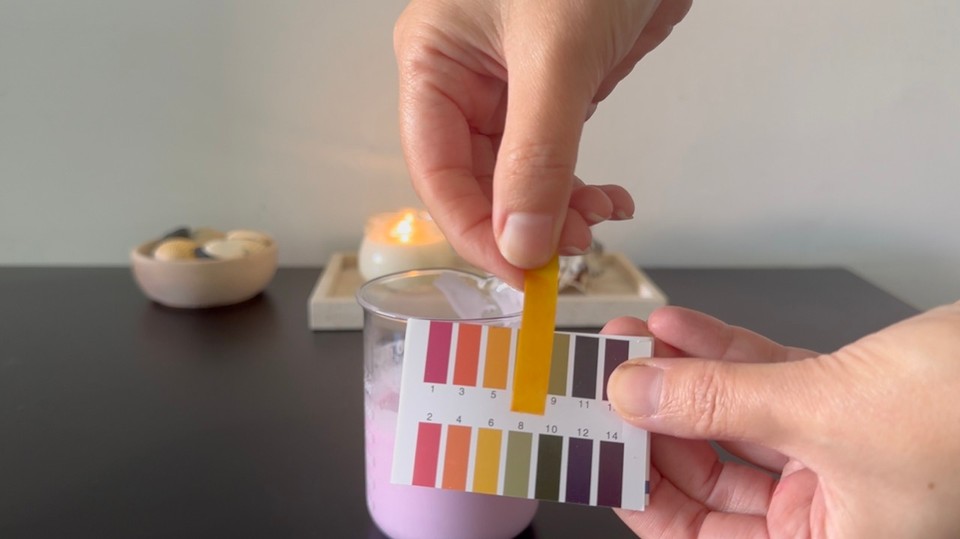
- Pour into a bottle and use on the ends of the hair.
